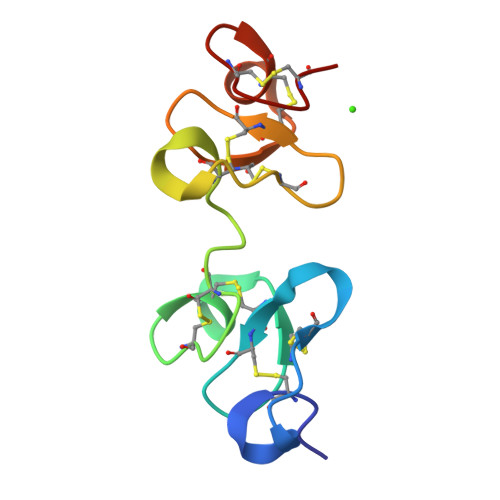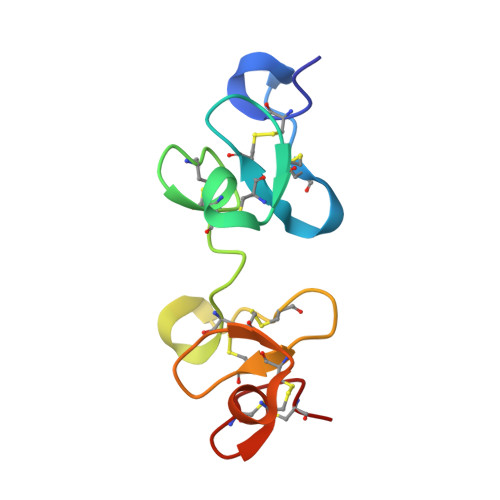Structures of two lectins from the roots of pokeweed (Phytolacca americana).
Fujii, T., Hayashida, M., Hamasu, M., Ishiguro, M., Hata, Y.(2004) Acta Crystallogr D Biol Crystallogr 60: 665-673
- PubMed: 15039554
- DOI: https://doi.org/10.1107/S090744490400232X
- Primary Citation of Related Structures:
1UHA, 1ULN - PubMed Abstract:
Pokeweed lectin (PL), a lectin specific for N-acetylglucosamine-containing saccharides, stimulates peripheral lymphocytes to undergo mitosis by binding to their cell surfaces. Four types of lectins have been isolated from the roots of pokeweed (Phytolacca americana) and shown to contain homologous domains but to have different molecular sizes and biological properties. PL-D, the smallest lectin in the group, has two isolectins, PL-D1 and PL-D2. PL-D1 consists of 84 amino-acid residues, while PL-D2 is identical to PL-D1 in sequence except for the lack of two C-terminal residues, Leu83 and Thr84. The crystal structures of PL-D1 and PL-D2 were solved by the molecular-replacement method and refined to 1.65 and 1.5 A resolution with R factors of 17.2 and 17.6%, respectively. The PL-Ds are composed of two repetitive chitin-binding domains, each of which has four S-S bridges and one putative carbohydrate-binding site. The two carbohydrate-binding sites in PL-D are located on one side of the molecule. The relative orientation of the two domains in PL-D1 differs from that in PL-D2. Two C-terminal residues of PL-D1 are invisible in the present crystal structure, indicating the flexibility of the region. PL-D2 has a Ca2+ ion bound to the C-terminus on the molecular surface. A wide distribution of acidic residues is characteristically observed on one side of the C-terminal region of PL-D.
Organizational Affiliation:
Institute for Chemical Research, Kyoto University, Uji, Kyoto 611-0011, Japan.

















